Related Research Articles
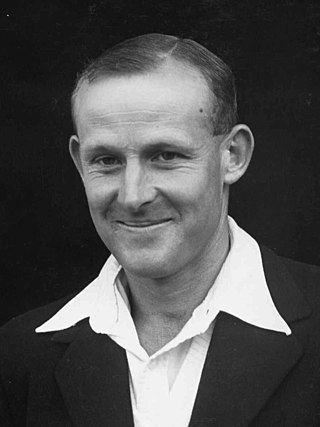
Henry Butler Cave was a New Zealand cricketer who captained New Zealand in nine of his 19 Test matches. His Test career extended from 1949 to 1958,and he played first-class cricket from 1945 to 1959.

Richard Charles Motz was a New Zealand cricketer. A right-arm fast bowler and hard-hitting lower order batsman,Motz played 32 Test matches for the New Zealand national cricket team between 1961 and 1969. He was the first bowler for New Zealand to take 100 wickets in Test cricket.

Norman Gallichan was a New Zealand cricketer who played first-class cricket for Wellington and one Test for New Zealand.

Leslie Watt was a New Zealand cricketer who played one Test match for the New Zealand national team,against England in March 1955. He was born at Waitati in Otago in 1924.
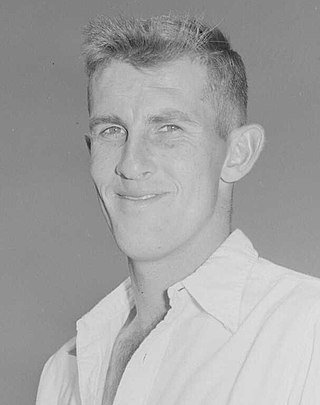
John Chaloner Alabaster was a New Zealand cricketer who played 21 Test matches for the country's national team between 1955 and 1972. A leg-spin bowler,he was the only New Zealander to play in each of the country's first four Test victories. In domestic cricket,he was often partnered at the crease for his provincial side Otago by his younger brother Gren,who bowled off-spin. A schoolteacher,he later served as Rector of Southland Boys' High School in Invercargill.
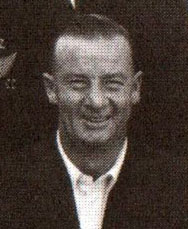
Alexander McKenzie Moir was a New Zealand cricketer. He played 17 Test matches for New Zealand in the 1950s as a leg-spinner and lower-order batsman.
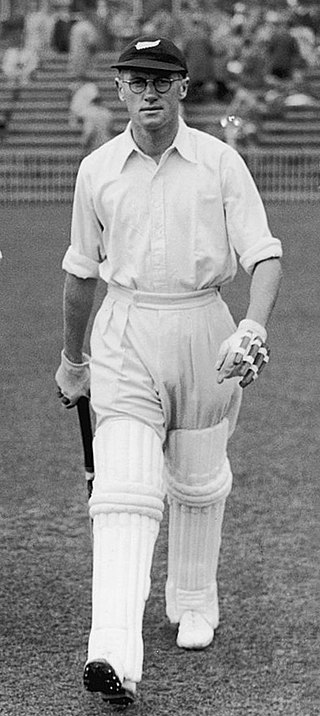
Denis Andrew Robert "Sonny" Moloney was a New Zealand cricketer who played three Test matches on New Zealand's 1937 tour of England. He died of his wounds after being captured at the First Battle of El Alamein during the Second World War.

John Cowie was a New Zealand cricketer who played in nine Tests from 1937 to 1949. His Test opportunities were restricted by New Zealand's limited programme,and his cricket career was interrupted by World War II from 1939 to 1945. Following the 1937 tour of England,Wisden commented:"Had he been an Australian,he might have been termed a wonder of the age."

Donald Derek Beard was a New Zealand cricketer who played in four Tests from 1952 to 1956. He was a schoolteacher and school principal.

Ian McKay Sinclair was a New Zealand cricketer who played in two Tests in 1956.

John Rider Lamason was a cricketer who played for Wellington from 1927–28 to 1946–47,and for New Zealand,but not in Test matches.
This article describes the history of New Zealand cricket from the 1945–46 season until 1970.
Ivan Alexander Walsh was an association football player who represented New Zealand at international level as a forward.
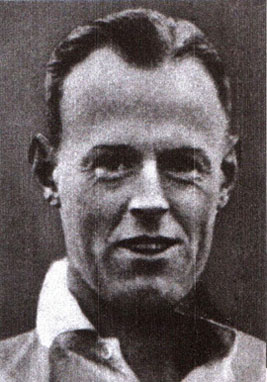
Ronald Osmond Talbot,was a New Zealand sportsman who played first-class cricket between the 1922–23 and 1935–36 seasons,and toured England with the national team in 1931. He also played representative rugby union for Canterbury.

Rupert Vivian de Renzy Worker played first-class cricket in New Zealand between 1914 and 1929. He represented New Zealand in the years before New Zealand played Test cricket.

Daniel Jason McBeath was a New Zealand cricketer who played first-class cricket between the 1917–18 and 1926–27 seasons. He was born at Malvern in the Canterbury Region in 1897.
Ata Mamea Matatumua is a former Samoan cricketer who played in New Zealand domestic competitions in the 1960s. His first-class career consisted of eight matches for Otago.
Thomas Albert McFarlane was a New Zealand cricketer. He played first-class cricket for Otago between the 1909–10 and 1919–20 seasons and for the New Zealand national cricket team before it was awarded Test match status.
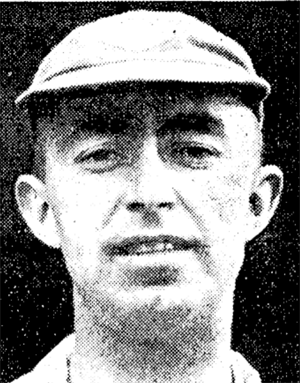
Edward Mulcock was a New Zealand cricketer. He played first-class cricket for Canterbury and Otago between the 1936–37 and 1943–44 seasons.
Graeme Bruce Thomson is a New Zealand former cricketer. He played 47 first-class and 13 List A matches,almost all of them for Otago between the 1974–75 and 1980–81 seasons.
References
- 1 2 3 McCarron A (2010) New Zealand Cricketers 1863/64–2010, p. 137. Cardiff: The Association of Cricket Statisticians and Historians. ISBN 978 1 905138 98 2 (Available online at the Association of Cricket Statisticians and Historians. Retrieved 5 June 2023.)
- ↑ Andy Quick, "Look Out Australia", Australian Cricket, January 1971, p. 47.
- ↑ Boock, Richard (7 July 2002). "Cricket: Clock turned back over pace claims". The New Zealand Herald. Retrieved 23 March 2020.
- ↑ Wisden Cricketers' Almanack 1971, p. 960.
- 1 2 Murray Webb, CricketArchive. Retrieved 16 February 2024. (subscription required)
- ↑ Wisden Cricketers' Almanack 1973, pp. 879–98.
- ↑ Wisden Cricketers' Almanack 1975, pp. 952–53.
- ↑ Richard Webb, CricketArchive. Retrieved 16 February 2024. (subscription required)
- 1 2 3 4 Dekker, Diana (23 November 2013). "Inside the mind of Murray Webb". stuff.co.nz. Retrieved 11 February 2018.
- ↑ Artistic representations Retrieved 30 December 2012.
- ↑ New Zealand Journal of Applied Psychology, Vol. 29, No. 2, December 2000, p. 93.
- ↑ Otago Daily Times, 17 January 2013, p. 11.
- ↑ McGlashan A (2013) 'If we make it out alive, we'll play for New Zealand', CricInfo, 13 March 2013. Retrieved 16 February 2024.
- ↑ Bio note at Nat Lib of NZ
- ↑ "Dunedin at Scubish.com". Archived from the original on 4 March 2016. Retrieved 29 December 2012.